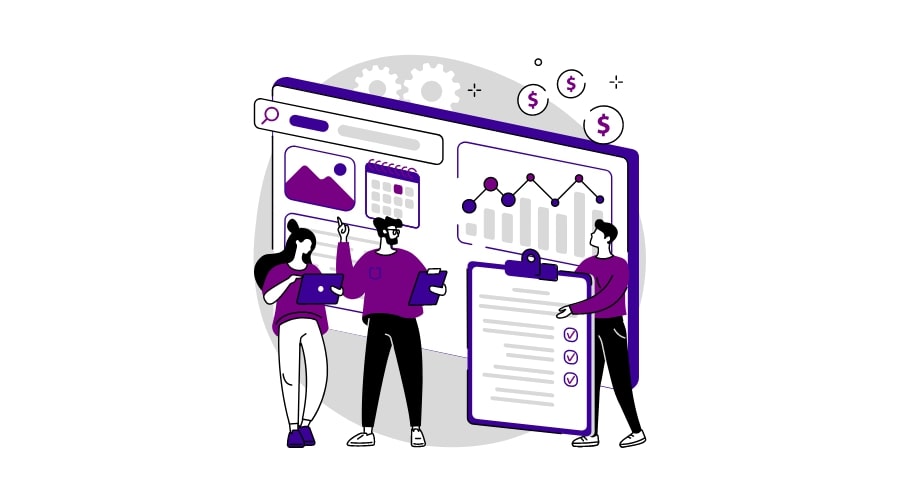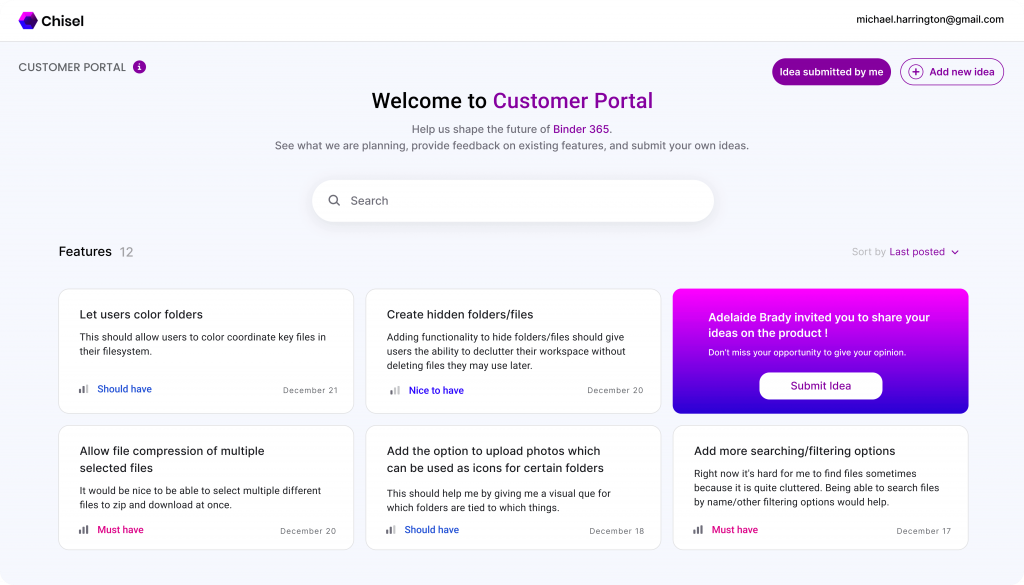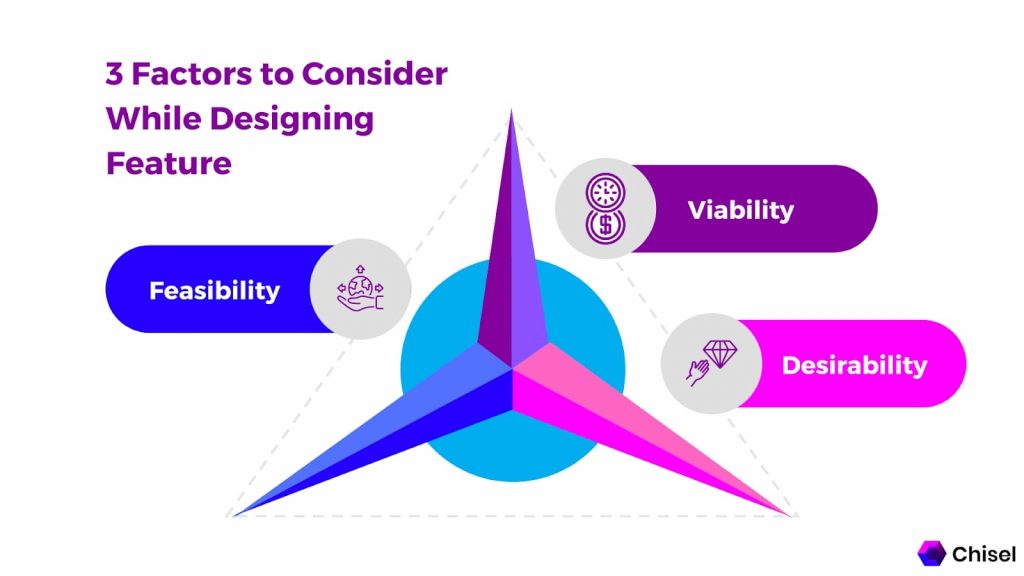What are Product Features and How to Prioritize them?

This article covers:
- What Is a Product Feature?
- The Best Features Are Designed for Your Needs
- How Can I Make Features Today?
- Who’s Responsible for Designing the Product Feature?
- What are the Best Practices for Shipping Product Features?
- What Are the Types of Product Features?
- How to Prioritize Product Features?
- What Are the Examples of Product Features?
Product Feature Definition
Product features are distinct areas of newly improved capabilities that add value to your users. Consider them as small gifts. Features might refer to general features, elements, UI design, and performance advancements.
The best products are those that have the best features. This article discusses features, how they differ from products, and how to make them.
What Is a Product Feature?
A product feature is a specific aspect of a product designed to address an individual need in the marketplace.
A feature can be anything from fuel efficiency to automatic headlights. It differs from the design of a car, which focuses on one goal. Fuel efficiency and automatic headlights are the features.
In software, a feature is a component of the essential product. You can’t have document software without a grammar-checker, font choices, and so on. Features make the product complete.
The Best Features Are Designed for Your Needs
When designing a feature, you must ask yourself what the end-users need.
It’s essential to design features with a clear purpose and deliver on what the user expects.
If you don’t meet their needs, users will get frustrated and find another product with more practical features.
How Can I Make Features Today?
There are several ways to make features. It depends on what your methodology is for developing the overall product.
Popular methodologies include agile, scrum, kanban, and waterfall in product development.
Agile Development
Agile methodology is a product development strategy that favors frequent releases, close customer collaboration, and working software over comprehensive documentation.
It is an iterative process with short cycles of planning, developing, and testing the product.
The flow of events in agile methodology starts from feasibility testing and ends with monitoring customer feedback.

Chisel’s user research pillar streamlines gathering and managing customer feedback.
Other methodologies described below, including scrum, kanban, and feature-driven development, are types of agile methodologies.
Scrum
In product management, scrum methodology is a framework for the iterative, incremental, and time-boxed delivery of features in a project. It is an agile methodology that emphasizes moving fast to market with minimum delay.
It also emphasizes rapid customer feedback, which helps shape future releases or projects.
Scrum is a type of agile methodology. The difference between agile and scrum is the level of detail. Agile is more general, while scrum specifies how the project runs and what to expect.
Scrum ensures everything stays on track by setting up roles for team members: product owner, designer or engineer, developer(s), tester(s), and more.
Kanban
Kanban methodology is a lean approach to product management, often used in software development.
It’s a system that spells out all the steps needed to plan work ahead of time instead of doing it as it comes up.
There are seven stages in the kanban methodology, beginning with a product feasibility test and repeating that step and all the others.
Additionally, if you’ve seen a visual on developing a product, it is likely a kanban board.
You can consider a kanban board as a physical or virtual board. It looks like swimlanes where you can move features across the board from idea to progress to completion.
Kanban boards are a great planning tool for developing features. They can help you keep your work organized and identify what needs to get completed next.

Kanban boards are a beneficial tool for managing tasks during development cycles. They provide insight into which items need more attention than others based on their position on the board at any given time. While also providing visibility across all stakeholders.
It ensures every team member has up-to-date information. The information is about different aspects of a project’s status without access to one person’s perspective. It makes your collaborative efforts much more effortless.
Waterfall
The waterfall methodology is a stage-based developmental framework where the entire product’s development gets completed in linear stages. Unlike agile frameworks that deliver product iterations and are continuous processes based on user feedback.
The waterfall takes a linear approach to deliver the finished product. You can only incorporate updates after completing each phase with no flexibility or changes until then.
Waterfall provides a more rigorous documentation process than agile. It has been adopted less lately due to the increased emphasis on customer-centric product development.
Waterfall requires more stringent documentation that will be obsolete with future updates. However, its rigor makes implementation more effortless for those experienced. (Who are not well versed in coding languages or programming skills.)
Who’s Responsible for Designing the Product Feature?
The responsibility for making the best feature lies on the team. The team will always be a mix of designers, software engineers, product managers, product owners, and sometimes marketers.
Check out Chisel’s team radar pillar that makes team collaboration more effortless than ever.
The product team leader is usually the product manager or product owner.
What’s the difference between product managers and product owners?
Product managers are in charge of the overall strategy, while the owners take care of the development.
However, there is often a close relationship between these two roles. They work together on every critical decision for the product.
What are the Best Practices for Shipping Product Features?
Trick question: there isn’t. It’s dependent on who’s working on features. All methodologies emphasize researching the customers’ needs, developing as quickly as possible, analyzing user behavior, iterating the product’s characteristics, and repeating that process.
However, we highly recommend using the best product management software to create features, and roadmaps, build teams and perform various other tasks.

What Are the Types of Product Features?
Tangible Attributes:
A product’s tangibility is the first and most significant feature. Like a bike, book, pencil, or table, it can be handled, seen, and its physical existence felt.
Intangible Attributes:
Conversely, the product could be an intangible service like banking, insurance, or maintenance.
Exchange value:
A product’s third feature is that it must have monetary worth.
Every product, tangible or intangible, must have an exchange value. The product must be worthy of being traded between sellers and buyers for a mutually agreed-upon price.
Advantages of Utility:
Another crucial feature of a product is that it should have utility. There are sets of possible benefits or utilities.
Distinctive Characteristics:
Another key feature from the marketing standpoint is that the product must have distinguishing characteristics, i.e., it should be distinguishable from other items.
Various types of design and packaging can aid in creating a consumer perception of product differentiation.
Customer Satisfaction:
Another marketing element is that the products should be able to provide value fulfillment to the customers for whom you designed them.
Bonus: Click here to learn about driving a great customer experience strategy.
Business Need Satisfaction:
A product’s final and equally significant quality is that it must meet a business requirement to be considered a product.
The most basic business need is to profit from the product offered. It must have the ability to generate revenue.
How to Prioritize Product Features?
You can find a few brilliant and straightforward ways to delve deeply into product decisions and prioritize products, upgrades, and ideas.
To avoid choice confusion, use the group features themes:
Breaking down individual features into smaller groupings is necessary before you begin prioritizing them. When deciding on projects to work on, choice paralysis is a serious problem. Using “themes” as a feature is one of the simplest methods to avoid it.
Themes are collections of elements that work together to achieve a common purpose, product vision, or overall strategy. They assist you in ensuring that you’re focusing on the essential features. While also avoiding the problems that come with having too many selections.
Distinguish between product characteristics based on:
Suppose personal prejudices and recent events can lead us astray. In such cases, among the first things you should do is take a more honest look at your characteristics. That includes examining each one against a set of criteria and speaking with certain members of your team:
Feasibility: How technically feasible is the feature based on your current resources? Talk to your technical teammates, engineers, UI designers, and front-end developers to determine what action to take.
Desirability: Is it anything that your clients genuinely want? Use every tool at your access to determine if this is something your users want. That entails speaking with researchers, UX designers, marketers, and customer service representatives and reviewing any user testing and validation you’ve already conducted.
Viability: How would this feature fit or support your broader strategy and market demands? Consult with appropriate executives and product managers to learn how this feature includes a larger ecology, including your own (additional features, initiatives, and goals).
Customers, segments, and industries:
Great product managers can recognize the demands of certain groups of customers. Each consumer and sector will have different needs. Mass-production without segmentation is no longer profitable in the age of personalization.
You can use a CRM to split product feature requests for:

Various industries (e.g. SaaS vs eCommerce)
Various Segments (e.g. B2B SaaS vs B2C SaaS)
Client Types (for example, B2B SaaS with 100+ workers vs. B2B SaaS with fewer than ten people)
Then prioritize according to the most profitable or strategic subset for the company.
Take the RICE Method a step further:
Sometimes features are complex and require more detailed prioritization than an essential grid can provide. The RICE approach is a great way to score priority in this scenario.
The RICE scoring model is a priority methodology that uses four aspects to help product managers decide which products, features, and other activities to prioritize on their roadmaps. Reach, impact, confidence, and effort are the four factors that make up the acronym RICE.
Chisel is indeed an outstanding product management software that uses the RICE scoring model to make your prioritisation management more accurate then ever.

To score features using customized criteria, use a priority scorecard:
The RICE method isn’t the sole method for scoring your features appropriately. To meet your stakeholders’ demands, you may need to modify the parameters by which you score. A simple priority scorecard might be a preferable alternative in this scenario.
A Priority Scorecard begins with a proposed list of criteria and their “weights” (essentially, how important are they as a percentage of the overall project?) You must begin by compiling this list on your own and seek feedback from stakeholders to fine-tune the figures.
Requests received:
The number of requests is another technique to prioritize features. Though it may appear self-evident, you’d be amazed how many organizations tend to overlook it. You can’t invest time and money creating a product that won’t generate enough revenue to justify the original expenditure.
As a result, particularly if you’re a small company or startup, you must always conduct market research and collect input from your clients. Additionally, prioritize your features based on the number of requests.
Bonus: For skilled prioritizing tips, click here.
Monetary worth:
This process allows you to break down your product into its financial value. Evaluate how a new or different feature contributes to your overall strategy and product requirements in this regard.
After gathering all the information, talk to other significant executives or product managers. This step is to see if the new feature is worthwhile considering your consumer base and industry. Other factors to consider are rules, legal concerns, finances, and the effort necessary to make such modifications.
What Are the Examples of Product Features?
The fabric of a georgette dress, like the battery life of a laptop, is a feature. A feature is when your product works with other products. A rose gold frame or casing is an excellent option.
Another example would be the features of a Laptop. Physical attributes (ultra-thin 18 coil structure), functionalities (charges three devices in one go), and additional value features are all product features.
For instance, the 20-Minute PPC Work Week is a product feature of WordStream Advisor. It is an expert system of unique, personalized recommendations based on users’ account data. WordStream Advisor identifies areas of AdWords and Bing Ads accounts where you get to make instant improvements.
In WordStream’s example, features specifically address typical challenges customers pose in the target market, such as improving the paid search workflow for busy small-business entrepreneurs.
You can plan, develop, and implement the features of the product. The 20-Minute PPC Work Week didn’t happen by chance, and neither did WordStream’s engineering team. WordStream discovered a common pain issue among its target market and set out to construct a solution that resolved it.
You may also be interested in:
- 7 Feature Request Tools to Collect & Organize Feedback
- Improve Your Digital Product Management
- Benefit of Using Prioritization Frameworks
- Agile Product Owner
- What is a Product?
- How to Prioritize Product Roadmap With Matrix?
- How to ask Users for Feedback
- Enterprise Feedback Management: What is it & Best Software?
